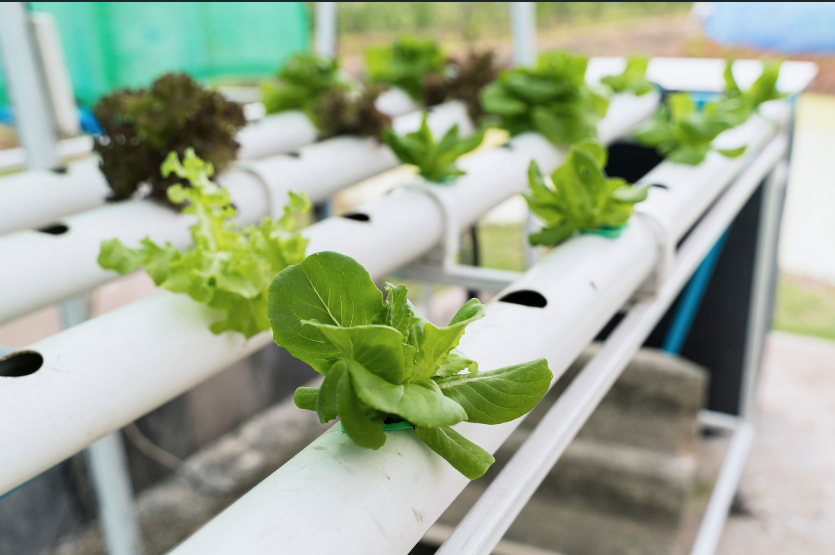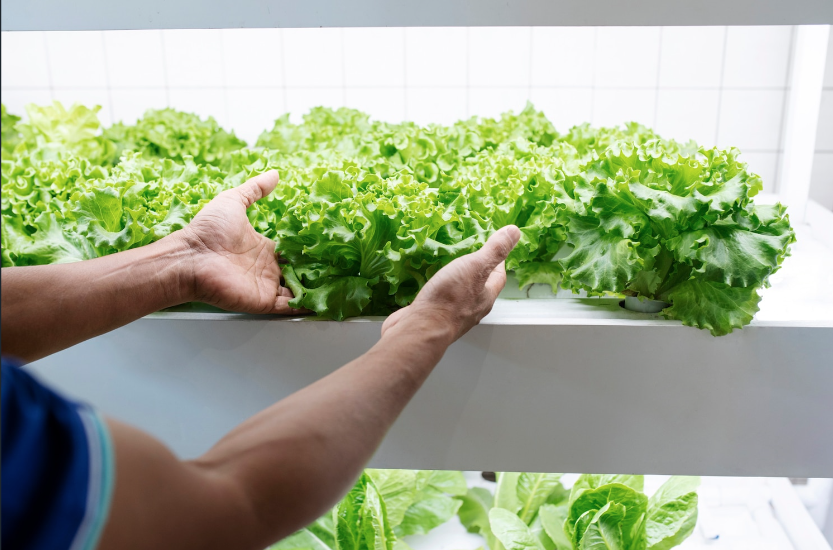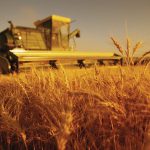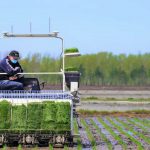Introduction
Hydroponic gardening is gaining popularity as a sustainable and efficient method of growing plants. By eliminating the need for soil and relying on water-based nutrient solutions, hydroponic plants can flourish in controlled environments with optimal growing conditions. Whether you are a seasoned gardener looking to expand your skills or a beginner looking to explore new gardening techniques, this ultimate guide will provide you with all the information you need to grow hydroponic plants like a professional. From setting up your hydroponic system to selecting the right plants and troubleshooting common issues, this guide will equip you with the knowledge and skills to achieve thriving, bountiful yields. Join the hydroponic revolution and unlock the secrets to successful soil-less gardening!

2. Understanding hydroponics: What sets it apart from traditional gardening?
Hydroponics is a unique method of gardening that differs from traditional gardening in several key ways. Understanding these differences is crucial for anyone interested in exploring the world of hydroponics.
First and foremost, hydroponics is a soil-less growing system. Unlike traditional gardening, which relies on nutrient-rich soil to nourish plants, hydroponics utilizes a nutrient-rich water solution that is directly delivered to the plant’s roots. This allows for a more controlled and precise delivery of nutrients, resulting in faster and healthier plant growth.
Another significant distinction is the use of a growing medium. In traditional gardening, soil serves as the medium that anchors the plants and provides support. In hydroponics, various inert media, such as perlite, coconut coir, or rock wool, are utilized to provide stability to the plants without the need for soil. This allows for better root aeration and less disease or pest infestation risk.
Hydroponic systems also enable greater control over environmental factors. Traditional gardening is susceptible to external conditions such as weather changes, which can affect plant growth and yield. Hydroponics eliminates these concerns by providing growers with the ability to regulate temperature, humidity, and lighting to create optimal conditions for plant growth. This level of control is especially advantageous for cultivating crops in regions with extreme climates or limited arable land.
Moreover, hydroponics offers significant water-saving benefits compared to traditional gardening. In hydroponic systems, water is recirculated and reused, minimizing waste. This is in stark contrast to traditional gardening, where water is lost through evaporation or runoff.
3. Starting your hydroponic garden: The essentials you need to know
Starting a hydroponic garden can be an exciting and rewarding venture. Hydroponics is a method of growing plants without soil, using nutrient-rich water instead. This approach offers numerous advantages, such as faster growth, higher yields, and the ability to control the growing conditions more precisely.
If you’re considering starting a hydroponic garden, there are a few essentials you’ll need to know. First and foremost, you’ll need to choose the right system for your needs. There are several different types of hydroponic systems available, including deep water culture, nutrient film technique, and drip irrigation. Each system has its advantages and disadvantages, so it’s important to do your research and choose the one that best fits your goals and resources.
Next, you’ll need to consider the lighting requirements for your hydroponic garden. Plants need light to photosynthesize and grow, so it’s crucial to provide them with the right amount and quality of light. LED grow lights are a popular choice for hydroponic plants due to their energy efficiency and ability to provide the specific light spectrum that plants need for optimal growth.
Nutrients are another essential element for hydroponic plants. Since plants aren’t growing in soil, they won’t have access to the natural nutrients found in the ground. Instead, you’ll need to provide them with a balanced nutrient solution that contains all the essential elements they need for healthy growth. This solution can be mixed yourself using commercial hydroponic nutrients or purchased ready-to-use.
Maintaining proper pH levels is also crucial for the success of your hydroponic garden. Different plants have different pH requirements, so it’s crucial to monitor the pH of your nutrient solution regularly and make any necessary adjustments to keep it within the optimal range for your chosen plants.
Lastly, don’t forget about ventilation and air circulation. Since hydroponic gardens are usually indoors, proper air movement is necessary to prevent the growth of mold and ensure that plants receive enough fresh air. Investing in fans and ventilation systems can help create an optimal growing environment for your plants.
Starting a hydroponic garden can be a bit intimidating at first, but with the right knowledge and equipment, it can be a rewarding and successful endeavor. By understanding the essentials of hydroponics, such as choosing the right system, providing proper lighting and nutrients, maintaining pH levels, and ensuring good ventilation, you’ll be well on your way to growing thriving and healthy plants.
Lastly, hydroponics allows for year-round cultivation, irrespective of seasonal limitations. Traditional gardening relies on specific growing seasons, resulting in limited crop availability during certain times of the year. With hydroponics, growers can extend the growing season and cultivate crops consistently throughout the year, maximizing yield and profitability.
In summary, hydroponics sets itself apart from traditional gardening through its soil-less nature, use of inert media, precise delivery of nutrients, optimal environmental control, efficient water usage, and year-round cultivation capability. By understanding and harnessing these differences, individuals can fully leverage the benefits of hydroponics and explore a new frontier in sustainable and high-yield agriculture.
3. Ensuring proper nutrient balance using a farm management system
Proper nutrient balance is crucial for the success of your hydroponic system. By utilizing a farm management system, you can ensure that your plants are receiving the essential nutrients they need to thrive. Here are five key strategies to ensure proper nutrient balance in your hydroponic system using a farm management system:
1. Monitor nutrient levels: A farm management system allows you to closely monitor the nutrient levels in your hydroponic system. This includes measuring the concentration of nutrients in the nutrient solution and monitoring the pH levels. By regularly checking these parameters, you can identify any imbalances and adjust accordingly.
2. Maintain optimal nutrient ratios: Different plants have varying nutrient requirements. A farm management system can help you maintain the optimal nutrient ratios by providing you with the ability to customize the nutrient solution for each crop. It takes into account the specific nutrient needs at different growth stages, ensuring that your plants receive the right balance of nutrients throughout their life cycle.
3. Detect nutrient deficiencies and excesses: Imbalances in nutrient levels can lead to deficiencies or toxicities in plants. With a farm management system, you can set up alerts and notifications to instantly detect any nutrient deficiencies or excesses. This allows you to take immediate action and prevent any negative effects on plant growth and development.
4. Analyze data and optimize nutrient management: A farm management system provides data on nutrient levels, plant health, and growth performance. By analyzing this data, you can gain insights into the effectiveness of your nutrient management practices. You can identify trends, make informed decisions, and optimize your nutrient balance for improved crop yield and quality.
Utilizing a farm management system is instrumental in ensuring proper nutrient balance in your hydroponic system. By monitoring, adjusting, and optimizing nutrient levels, you can promote healthy plant growth and maximize your crop production.

4. The future of hydroponics: Trends and innovations
Hydroponics is a revolutionary method of growing plants without soil, using nutrient-rich water solutions instead. Over the years, it has gained popularity and become a key component of modern agriculture. As we look to the future, there are several trends and innovations in hydroponics that are worth keeping an eye on.
1. Vertical Farming: With limited land availability and increasing urbanization, vertical farming is emerging as a sustainable solution. This innovative approach involves growing plants in vertically stacked layers, maximizing space utilization and crop yield.
2. Controlled Environment Agriculture (CEA): CEA allows growers to have complete control over the environmental factors that affect plant growth, including temperature, humidity, light, and nutrition. This technology enables year-round production, reduces the risk of pests and diseases, and enhances crop quality.
3. Automation and Artificial Intelligence (AI): The integration of automation and AI technologies into hydroponic systems is revolutionizing the industry. Automated systems can monitor and adjust environmental conditions, nutrient levels, and irrigation schedules, providing optimal growing conditions and minimizing human intervention.
4. Nutrient Delivery Systems: Advanced nutrient delivery systems are being developed to optimize nutrient absorption by plants. These systems ensure the precise delivery of nutrients at the right time, in the right concentrations, resulting in healthier and more productive crops.
5. LED Lighting: LED technology has transformed indoor farming by providing highly efficient and customizable lighting solutions. LED lights can be tailored to specific crop requirements, promoting faster growth, increased yields, and energy savings.
6. Water and Resource Management: Efficient water usage is a critical aspect of hydroponics. Innovations in water recycling and filtration systems help minimize water consumption and reduce the environmental impact. Additionally, the use of renewable energy sources to power hydroponic systems can further enhance sustainability.
7. Nutrient Solutions and Supplementation: Research and development in hydroponic nutrient solutions are continuously improving, allowing for better plant nutrition and growth. Supplementation with beneficial microbes and organic additives is gaining traction, promoting plant health and resilience.
8. Data Analytics and Predictive Modeling: With the proliferation of sensors and monitoring devices in hydroponic systems, vast amounts of data are being collected. Analyzing this data and applying predictive modeling techniques can improve crop management strategies, optimize resource usage, and enhance overall productivity.
9. Collaboration and Knowledge Sharing: In the rapidly evolving field of hydroponics, collaboration, and knowledge sharing among researchers, growers, and manufacturers are vital. Collaborative efforts facilitate the exchange of ideas, lead to innovations, and drive the industry forward.
As hydroponics continues to evolve, these trends and innovations will shape the future of this industry. By staying informed and embracing these advancements, hydroponic growers can maximize their success, contribute to sustainable agriculture, and meet the growing demand for fresh and nutritious food.
10. Conclusion: Embracing the benefits of hydroponics for sustainable farming.
In conclusion, embracing the benefits of hydroponics for sustainable farming is a crucial step toward ensuring the future of agriculture. The advantages of hydroponic systems, including increased crop yields, efficient use of resources, and reduced environmental impact, make it a highly viable solution for the challenges that our planet faces in terms of food production.
Through this article, we have explored the various benefits that hydroponics offers for sustainable farming. We discussed how hydroponic plants use water and nutrients more efficiently, resulting in higher yields and reduced water and fertilizer usage. Additionally, we highlighted the versatility of hydroponics, allowing for year-round cultivation, regardless of climate or geographical limitations.

Furthermore, we examined the environmental advantages of hydroponics, such as its ability to minimize water pollution and the elimination of soil erosion. We also mentioned the potential for urban farming and the utilization of unused spaces for cultivating crops.
Farmers and agricultural stakeholders need to embrace hydroponics and integrate it into their farming practices. By doing so, we can not only address the challenges of population growth and climate change but also contribute to a more sustainable and resilient food system.
Hydroponics offers a wealth of benefits for sustainable farming, from increased yields to reduced resource usage and environmental impact. As we move towards a more sustainable future, we must embrace and promote the adoption of hydroponic systems in agriculture. By doing so, we can ensure the availability of nutritious food for future generations while minimizing our ecological footprint.




